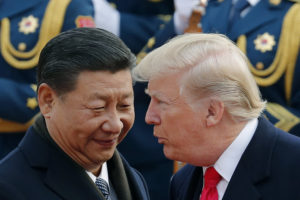Everyone Looks a Little Bit Asian
Sharron Angle's recent confusing remarks about race and ethnicity serve a unique purpose. They provide an opportunity to open dialogue in a campaign season that has been more focused on economics than on ethnicity. Could it be that the two are connected?Sharron Angle's recent confusing remarks about race and ethnicity serve a unique purpose.
Like many other Hispanics, I am a member of Generation E.A. (ethnically ambiguous). Over the years I’ve been mistaken for just about every racial or ethnic combination—from Eurasian to Afro-Irish to Arab-Native American.
This guessing game is something members of Generation E.A. are used to in discussions with acquaintances, classmates, co-workers and curious passersby. Sometimes it’s even educational. But this is never something one would expect to hear from a politician, particularly a politician addressing the Hispanic Student Union at Rancho High School in Las Vegas, Nev. Yet this is exactly what happened when Sharron Angle, the Republican candidate for Senate in Nevada, told a group of students that she did not know if the brown border crossers featured in her “Best Friend” commercial were all Hispanic because “some of you look a little more Asian to me.” She continued, “What we know, what we know about ourselves is that we are a melting pot in this country. My grandchildren are evidence of that. I’m evidence of that. I’ve been called the first Asian legislator in our Nevada State Assembly.”
Do these words have a logical meaning? A Las Vegas Sun blogger tried to find out when he asked what Angle was talking about. Angle’s handlers said that “a reporter thought she looked Asian.” Meaning, if everybody looks a little bit “Asian,” then no one can be a racist. Especially not Sharron Angle, “the first Asian legislator” from Nevada.
Because this explanation proved unsatisfying, Angle’s spokesman, Jerry Stacy, told The Dailey Caller that Angle is “a proud grandmother of beautiful Hispanic children — she loves them dearly and wants only the best for them, and these are some of the motives that inspire her to run for office.” Does this remind anyone else of George H.W. Bush’s referring to his multiracial Latino grandchildren as “the little brown ones”?
Yet another Angle spokesperson tried to clarify by focusing on diversity: “Sharron is making the point that this country is a melting pot and you cannot judge people based on stereotypes or the way they look. When she was in the legislature, a reporter mistakenly referred to Sharron as being of Asian descent.” Maybe we are being asked to believe that Angle is against racial/ethnic profiling and that she identifies with Hispanic people because she too looks Asian and has been racially profiled as a “model minority” on that basis. Obviously, this makes no sense.
Since nobody seems to understand what Angle is getting at, we need to remember she is no stranger to controversy. She has been linked to ads telling Hispanics not to vote. She believes that Social Security should be privatized. She has called for the elimination of the Energy Department and the Environmental Protection Agency and denounced the BP compensation fund for victims of the oil spill. She also sees no need for the “unconstitutional” doctrine of separation of church and state. This conveniently supports her suggestion that her candidacy is a mission for God. God, of course, is not to be confused with Allah, who is being praised by all those who Angle says are calling for Shariah law to be practiced by everyone in the U.S.
But the most recent confusing remarks about race and ethnicity are different because they serve a unique purpose. They provide an opportunity to open dialogue in a campaign season that has been more focused on economics than on ethnicity. Could it be that the two are connected?
“The interesting thing about Angle’s version of racial and ethnic talk is that it is more focused on Hispanic issues than on the traditional black-white paradigm,” according to professor Ulli K. Ryder of Brown University’s Center for the Study of Race and Ethnicity in America. “What’s happening here is that Hispanics and Asians are being compared and confused because they both equal foreign in the U.S. racial imagination.” So, Angle is saying that these two foreign groups can melt and look alike, but that they will never look like Americans.
More meaning can be found if we consider Angle’s comments in light of the twist they take on the idea of a “colorblind” society. Angle’s message is that there is no difference between nonwhite races because she can’t see any. This also means that her privileged perspective is the one that counts. That is why she uses multiracial and multiethnic identity to cover racist anxieties about the nation’s increasing diversification while claiming that she can’t possibly be racist.
What’s more is that all of this precedes what Rachel Maddow has just called the “most overtly racist ad of this campaign.” The “Thanks, Pal” ad features a group of college bound white high school graduates celebrating followed by a photo of three scowling Hispanic men, who are ready “to seize preferred college tuition rates from the students. A banner proclaiming the men ‘illegal aliens’ accompanies the photo.” The ad is so offensive that it earned comparisons to the “Willie Horton” ad and to the “Weekend Passes” and “Revolving Door” ads used to defeat Michael Dukakis in the 1988 presidential campaign. When confronted with this interpretation Angle struggled to defend the ad. Sometimes fear mongering and stereotyping are just too hard to ignore.
Perhaps instead of playing racial guessing games and saying that everyone looks a little bit Asian, Angle might follow the advice offered in the song “Everyone’s a Little Bit Racist” from the Broadway play “Avenue Q.” “If we all could just admit that we are racist a little bit, even though we all know that it’s wrong, maybe it would help us get along.” At the very least, she’d be honest.
Your support matters…Independent journalism is under threat and overshadowed by heavily funded mainstream media.
You can help level the playing field. Become a member.
Your tax-deductible contribution keeps us digging beneath the headlines to give you thought-provoking, investigative reporting and analysis that unearths what's really happening- without compromise.
Give today to support our courageous, independent journalists.






You need to be a supporter to comment.
There are currently no responses to this article.
Be the first to respond.